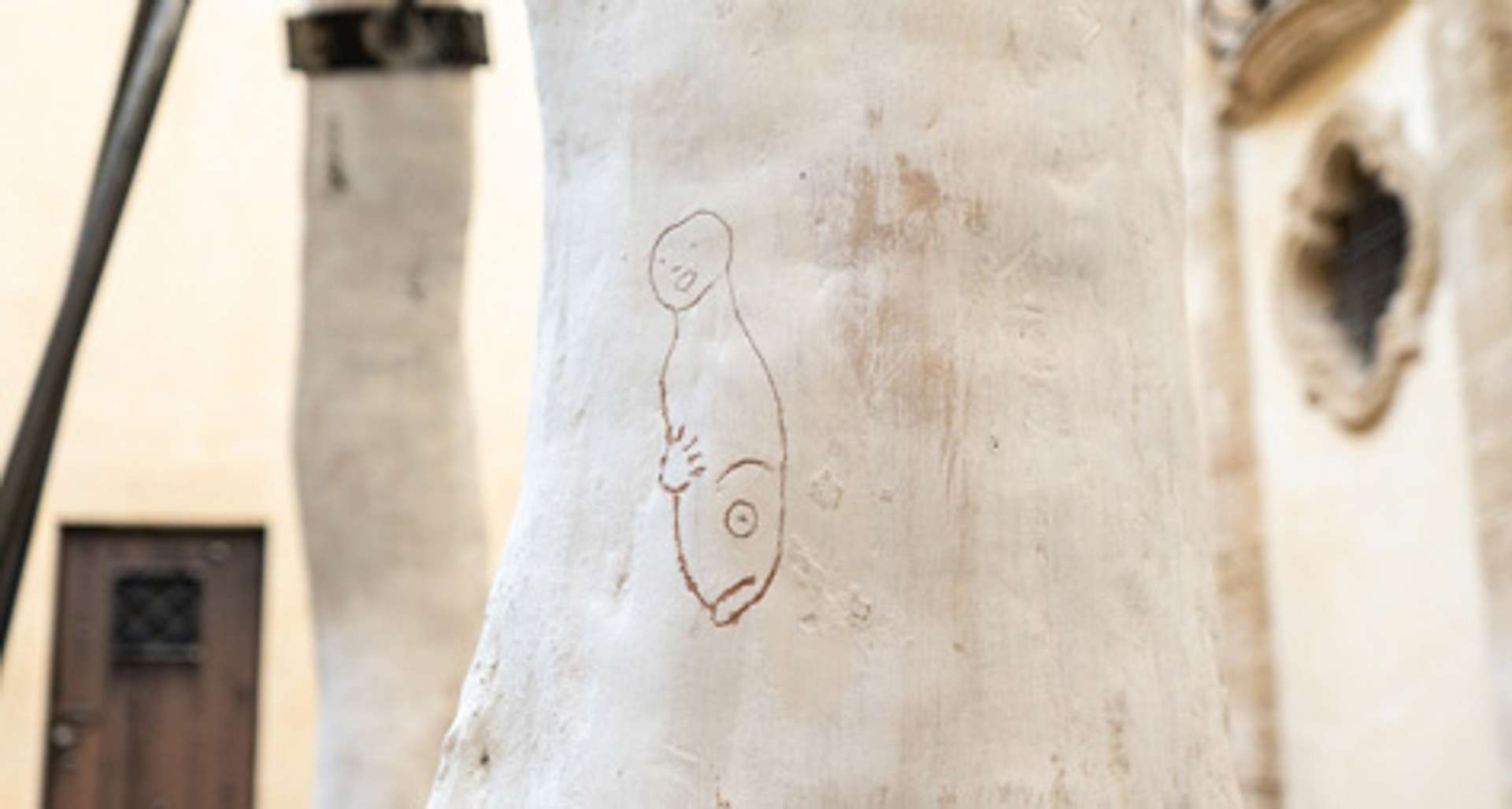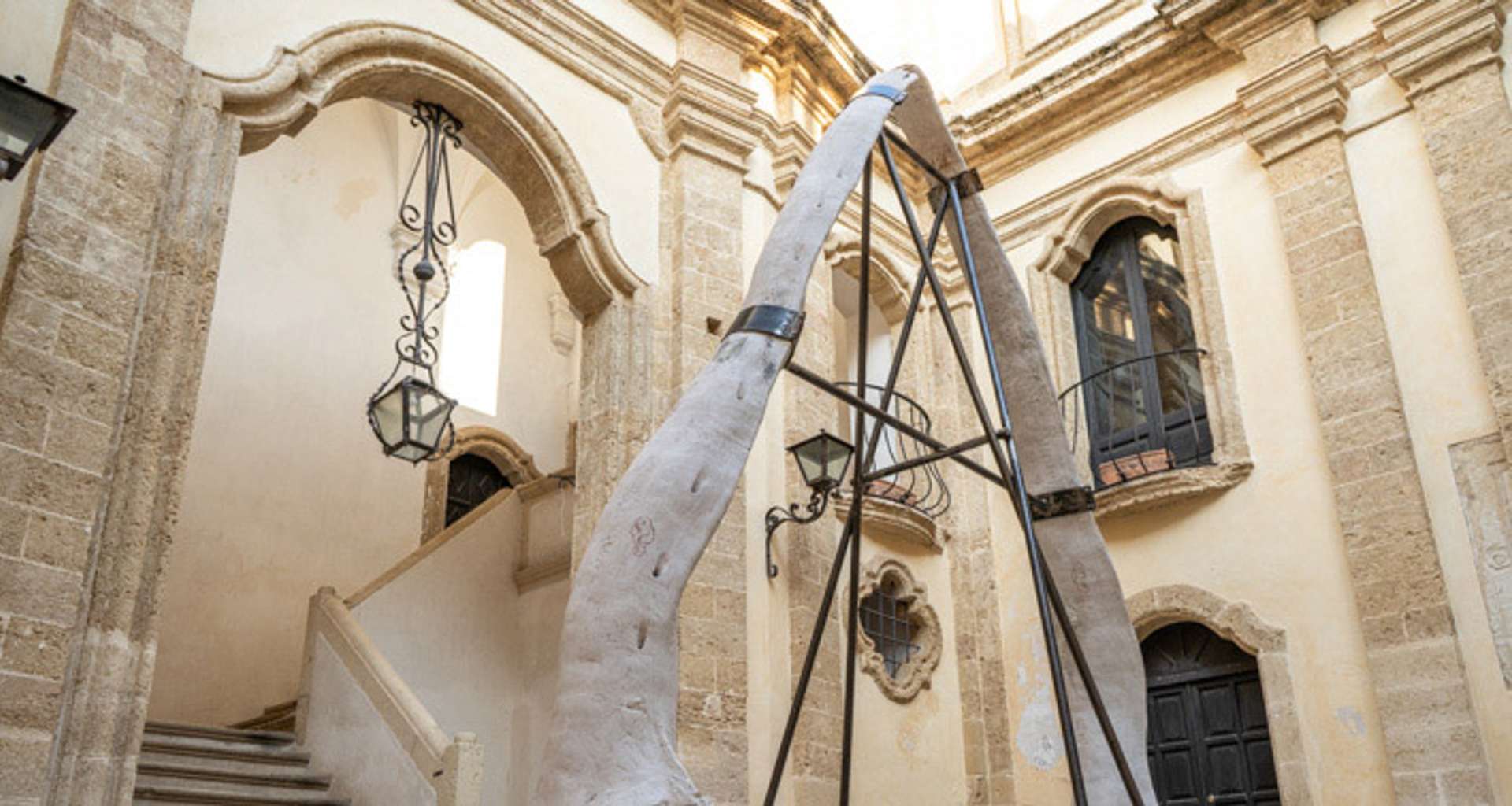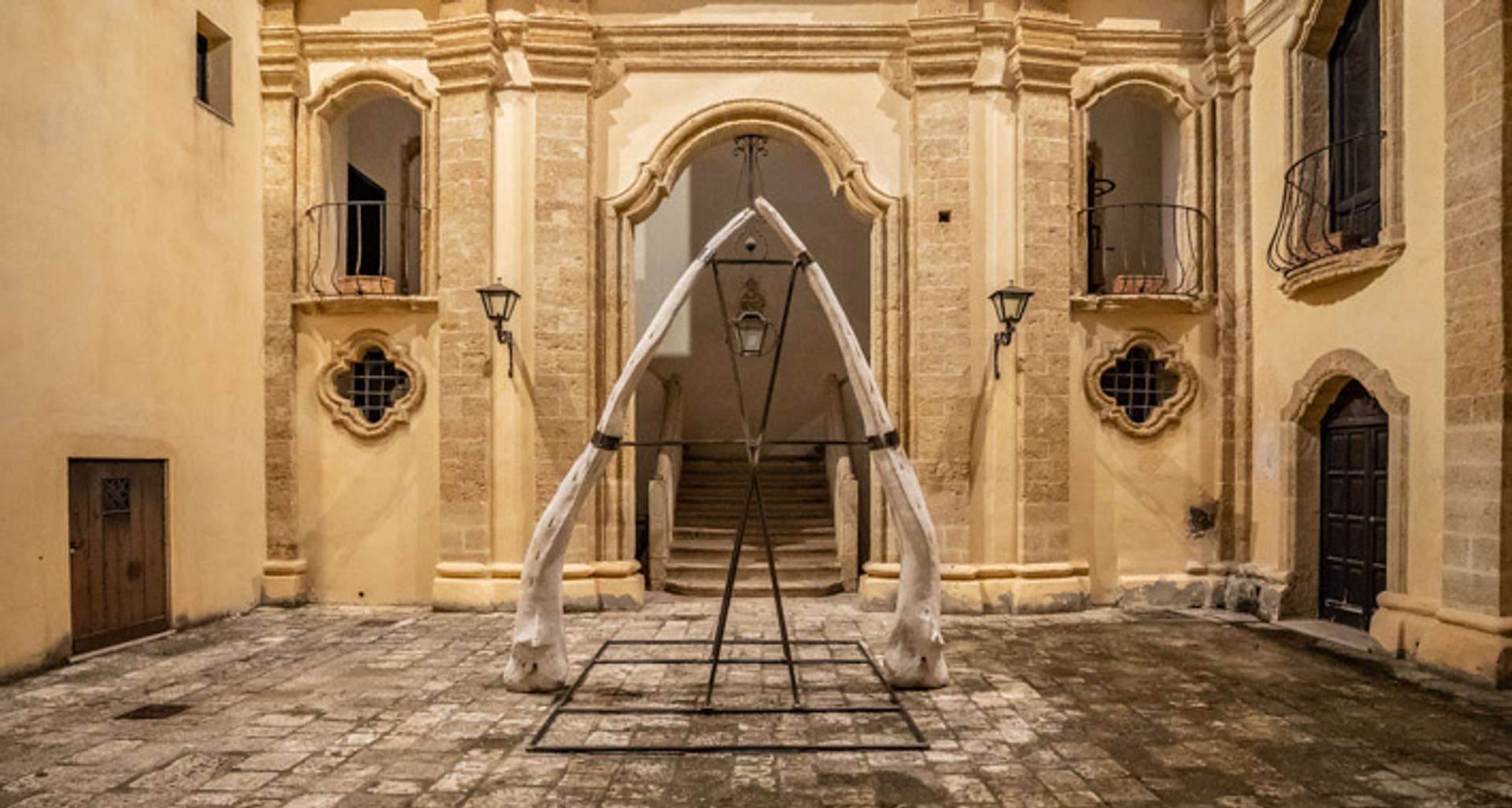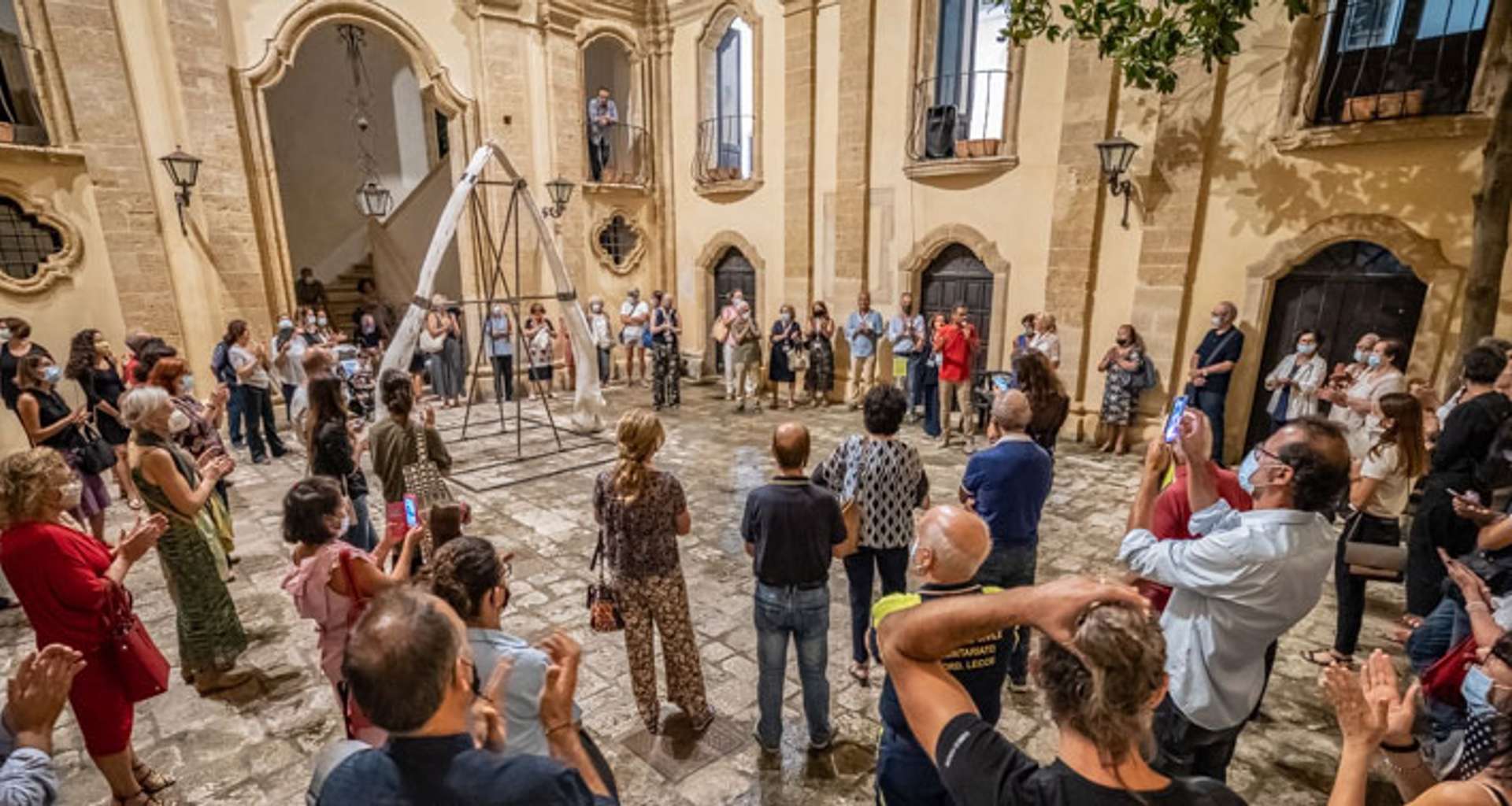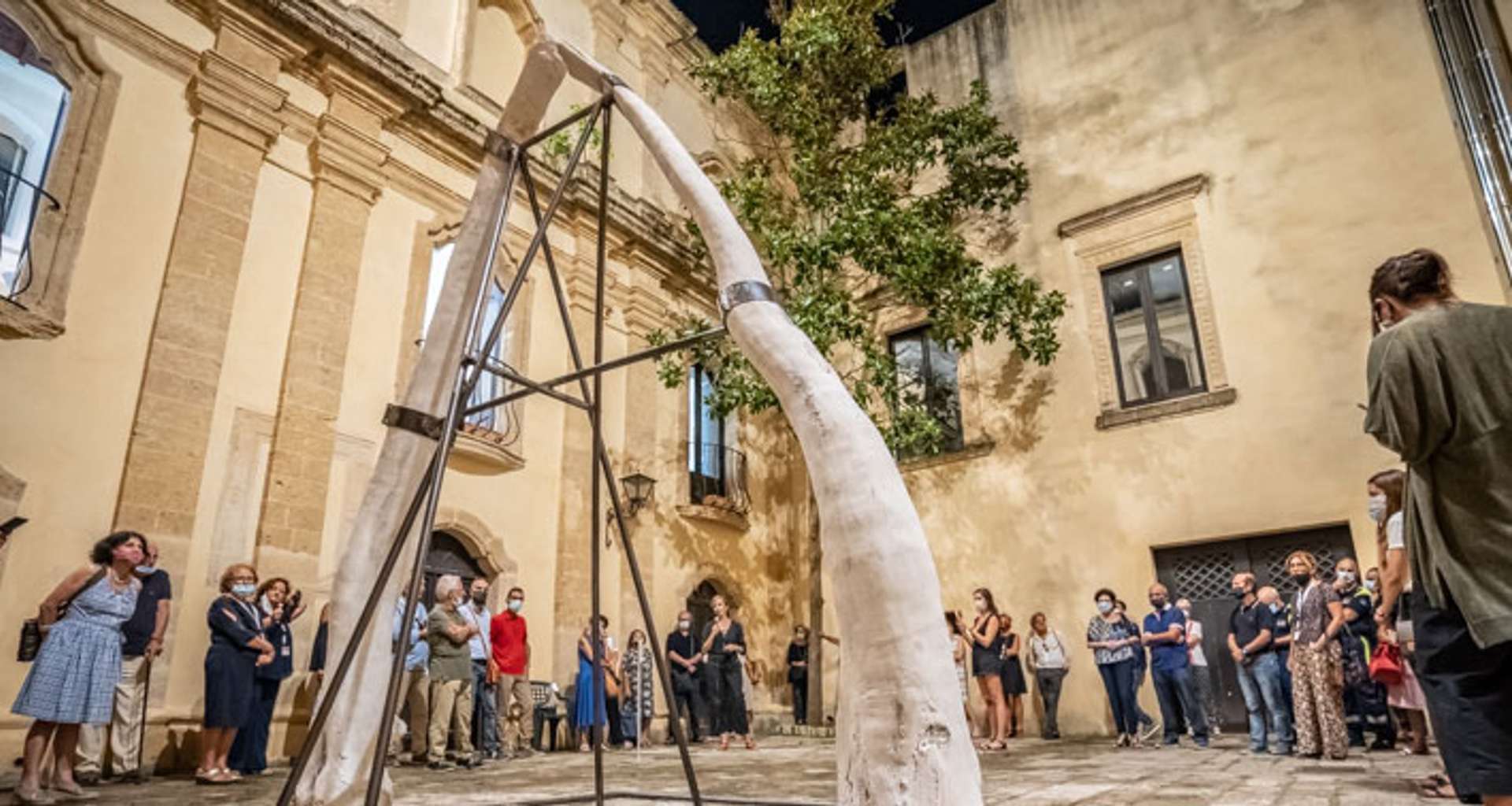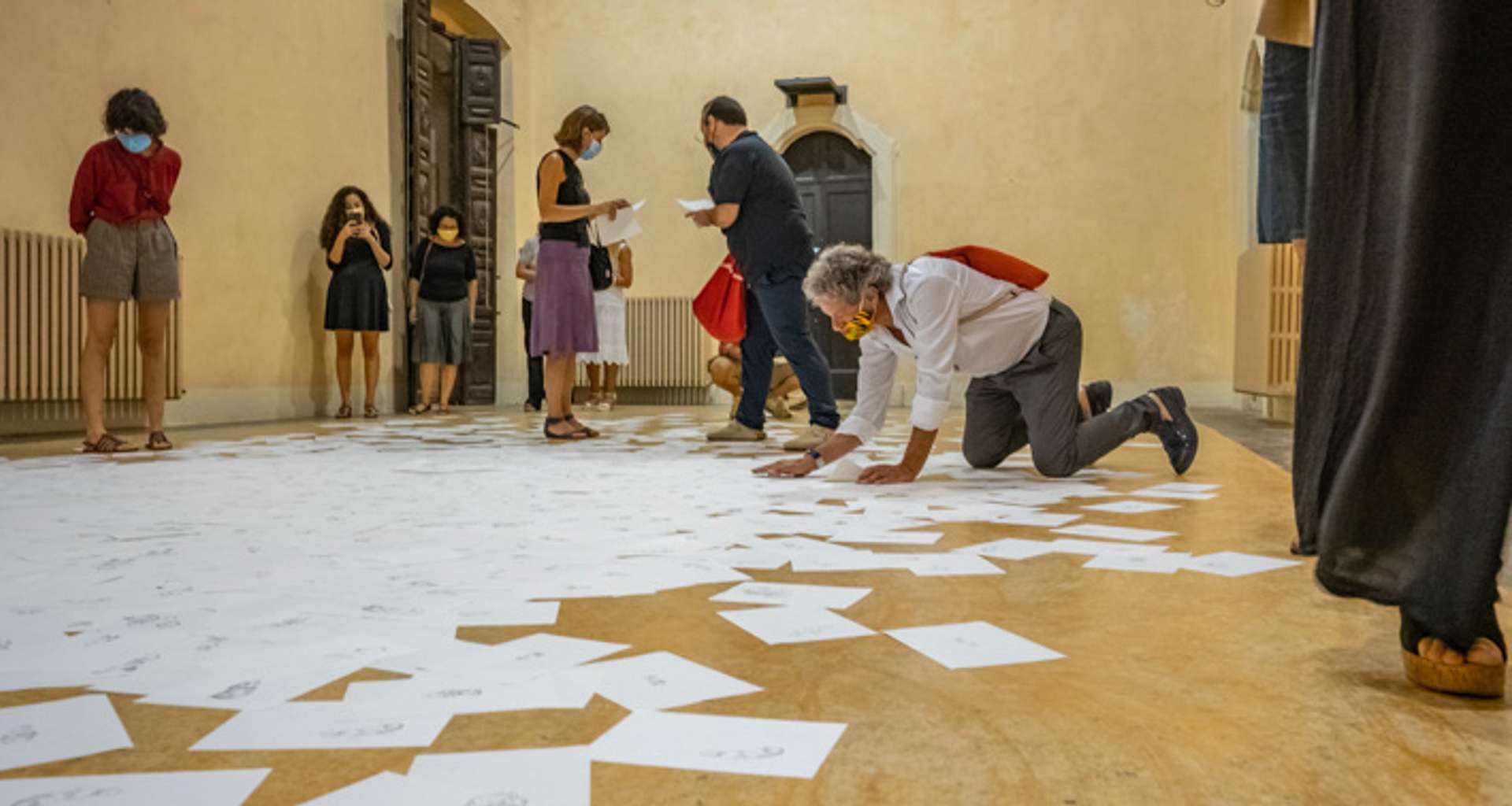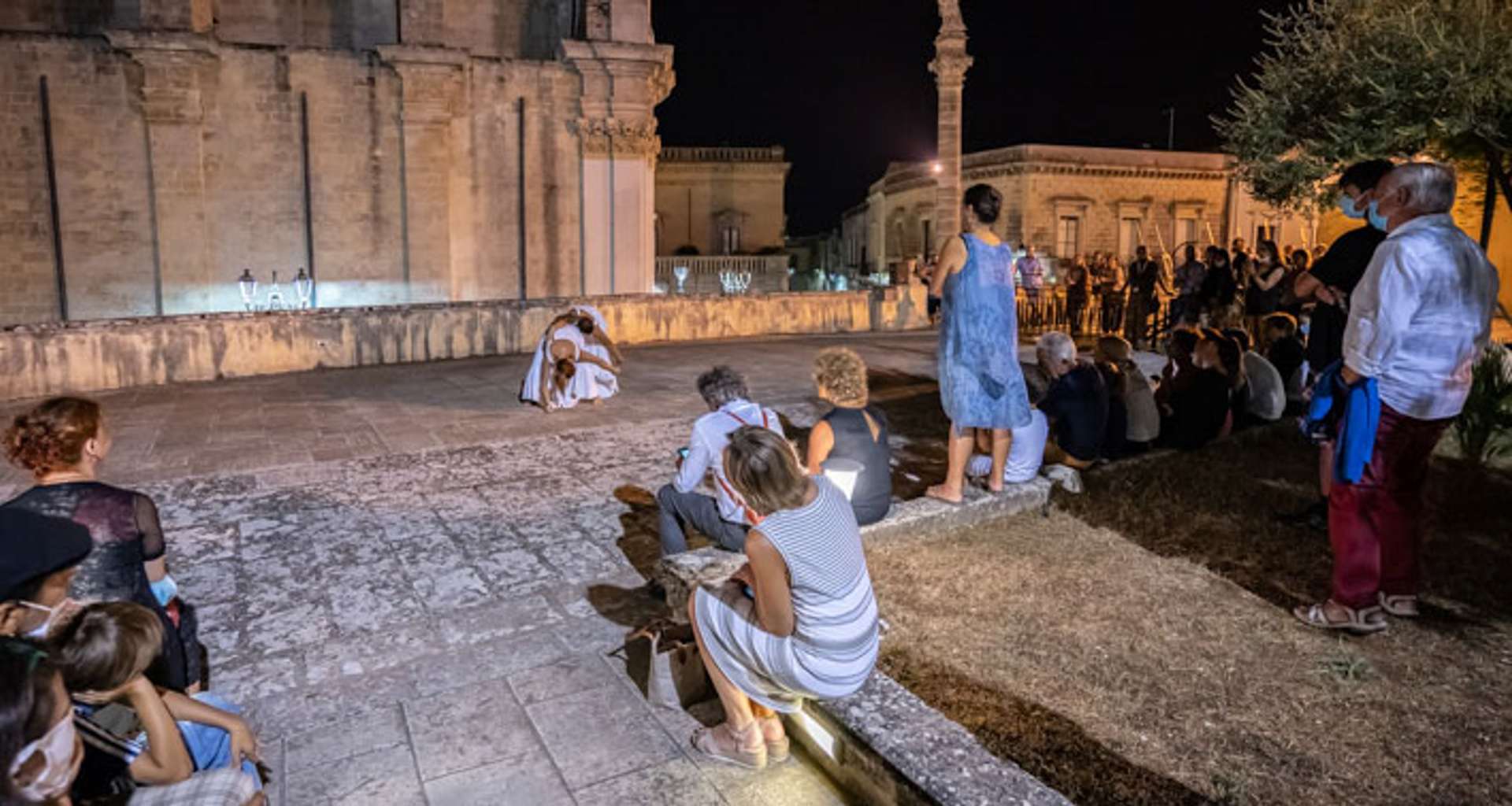A monumental sculpture of about 4 meters high reproduces in a realistic way two jaws of a minke whale. The work, made entirely of soil from Impruneta, is supported by a specially designed iron scaffolding, which supports its arched shape and amplifies the image of threshold and of the passage.
Whalebone Arch is another chapter in the twenty-year old Whale Project, born in the early 2000s. Like a true fossil, the work mutates and layers local stories and experiences – land meeting land.
ㅤ
Permanent works:
Claudia Losi, Whalebone Arch, 2019, scultura in terra dell'Impruneta 50 x 390 cm; supporto in ferro 350 x 300 x 200 cm.
The artwork is in the entrance cloister of the Town hall di Presicce-Acquarica; Via Tommaso Fiore, Presicce
"WHALEBONE ARCH" IS THE FINAL CHAPTER OF A STORY THAT I HAVE BEEN WEAVING FOR ALMOST TWENTY YEARS, A ‘THRESHOLD’ FORMED BY TWO ‘WHALE JAWS’ OF BLEACHED RED EARTH THAT WILL TRAVEL TO THE FINISTERRAE OF ITALY, SALENTO
The work of Claudia Losi (Piacenza, 1971) focuses on the observation of the environment, natural and anthropized: the attention to natural sciences and humanities is a constant reference. Attentive to the historical and anthropological aspects of the environment in which we live, Claudia Losi is interested in exploring the concept of narrative through art and writing, sometimes creating new and temporary communities of human interaction and sharing of imaginaries.
THE PRODUCTION OF LAMP OIL, OLIVE OIL PRODUCED FOR CENTURIES BY THE UNDERGROUND OIL MILLS IN THE VILLAGE OF PRESICCE, WHICH FOR DECADES FED THE PUBLIC AND PRIVATE LIGHTING OF DISTANT CAPITALS, OF PARIS OR LONDON. SAME DESTINY FOR WHALE OIL. THE BELLY OF THE LARGE UNDERGROUND STONES, DRIVEN BY ANIMALS AND MEN, AND THE BELLY OF THE GREAT AQUATIC MAMMALS HAVE ILLUMINATED ROADS, CREATED WEALTH, SHIFTED PAIN AND WORK
The village of Presicce is a unique town within the Salento territory thanks to its 23 underground oil mills located mostly among the ancient alleys and the central Piazza del Popolo.
The evocative aura that characterizes the alleys, squares and courtyard houses, the important noble and bourgeois palaces, the churches and chapels, the underground oil mills of Via Gramsci and Piazza del Popolo allows one to rediscover the atmosphere of the past, when the simplicity and concreteness of the peasant spirit coexisted with that of the nobility and the landed bourgeoisie who, since the second half of the sixteenth century, decided to invest their assets in this village. The traditional peasant civilization is represented by the museum located inside the Ducal Palace, providing important evidence of the local culture with particular attention paid to everyday life, agricultural work and trades.

